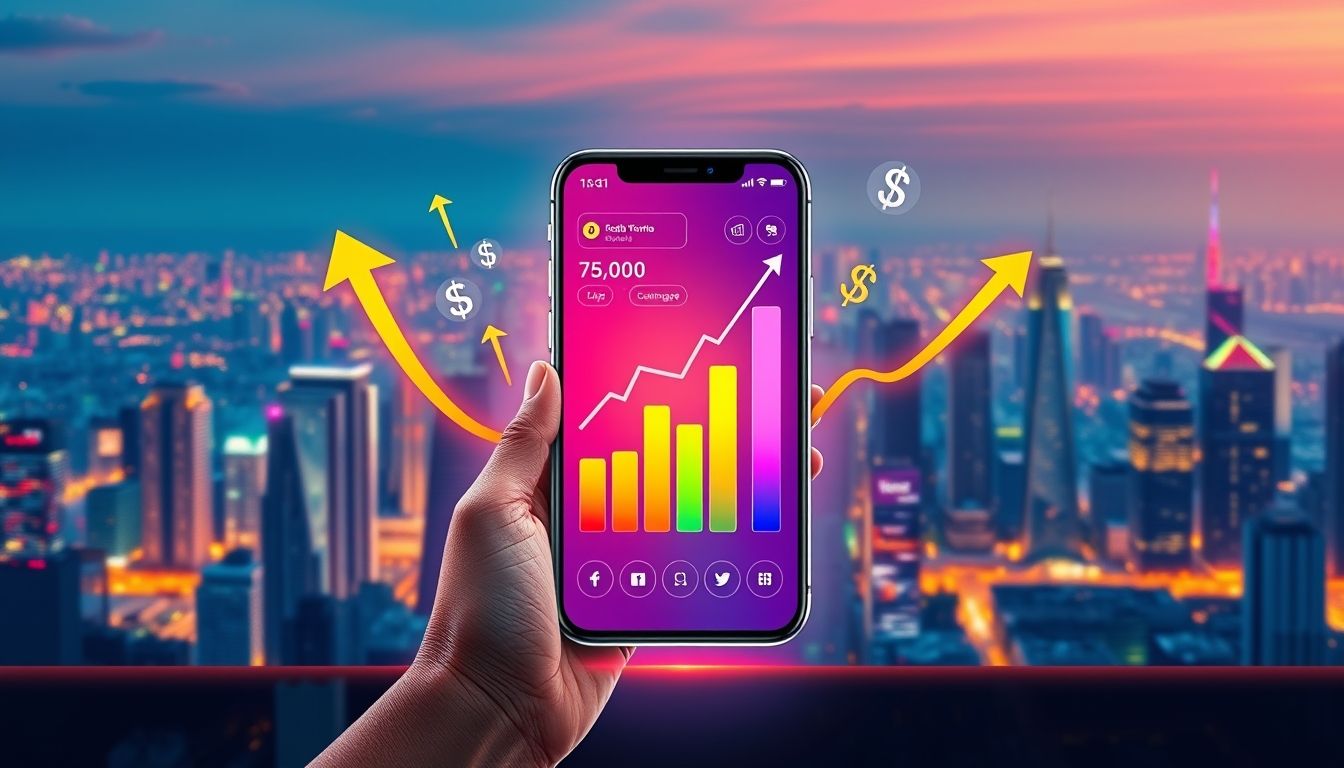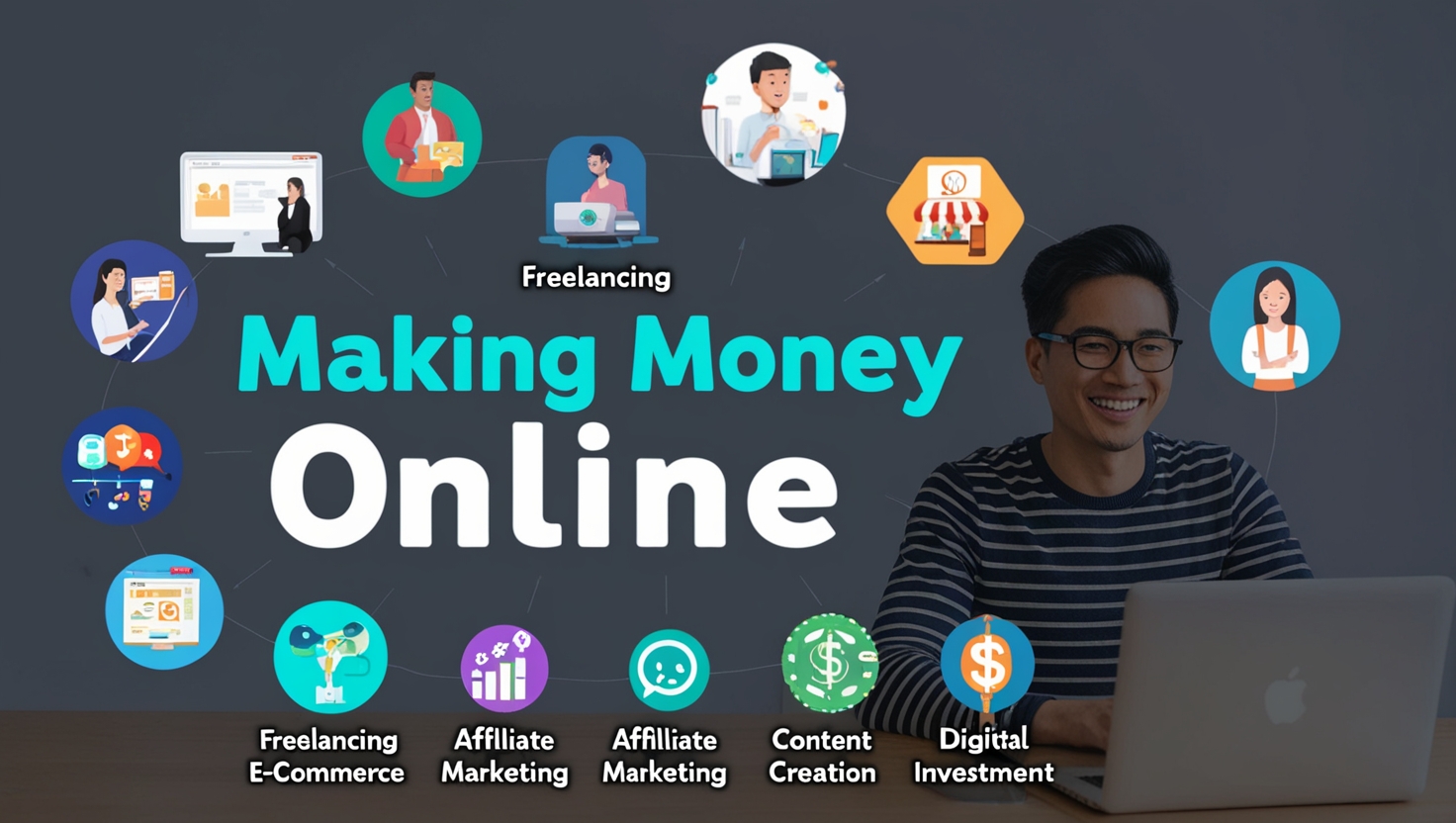Introduction: The World of Mobile Apps and Immense Opportunities
The world of mobile applications is experiencing tremendous growth, with the number of users and available apps increasing day by day. The mobile phone is no longer just a communication tool; it has become an integrated platform for entertainment, learning, shopping, and business management. This digital transformation has created golden opportunities for developers and ambitious entrepreneurs to generate significant profits by creating innovative applications that meet user needs.
Chapter 1: Identifying a Profitable App Idea
The first and most important step in the journey to profit from mobile apps is identifying a unique and innovative app idea. The idea should solve a real problem faced by users or meet a pressing need they have. Here are some tips for identifying a profitable app idea:
- Look for Problems: Notice the problems you face in your daily life or that others around you face. Is there a way to make their lives easier or more efficient through an app?
- Analyze the Competition: Look for apps similar to your idea and try to identify their strengths and weaknesses. How can you offer something better or different?
- Use Keyword Research Tools: Use tools like Google Keyword Planner or SEMrush to research keywords related to your area of interest and see the monthly search volume for them.
- Survey User Opinions: Talk to friends, family, and colleagues and ask them about their needs and desires. What apps do they wish existed?
Chapter 2: Feasibility Study and Market Analysis
After identifying the app idea, a comprehensive feasibility study should be conducted to assess the idea's potential for success in the market. The feasibility study should include an analysis of the target market, competitors, expected costs, and potential revenues.
Target Market Analysis
Precisely define the target group of users who will use your app. What are their ages, gender, interests, and geographic location? The more specific you are, the easier it will be for you to market your app to them.
Competitor Analysis
Look for apps similar to your app and try to understand their marketing strategies, monetization models, and user reviews. What can you learn from them? And how can you differentiate yourself from them?
Estimating Expected Costs
Calculate the expected costs of developing, marketing, and maintaining the app. These costs include programming, design, testing, marketing, advertising, and technical support costs.
Estimating Potential Revenues
Identify the monetization models you will use to generate income from your app. These models include advertising, subscriptions, in-app purchases, commissions, and affiliate marketing.
Chapter 3: Designing User Experience (UX) and User Interface (UI)
User experience (UX) and user interface (UI) design play a crucial role in the success of the app. The app should be easy to use, visually appealing, and provide a pleasant experience for users. Here are some tips for designing an excellent user experience and user interface:
- Simplicity: Keep the design simple and easy to understand. Avoid adding too many features or elements that may confuse users.
- Clarity: Use clear and direct language throughout the app. Make sure users know exactly what they are doing and how to do it.
- Responsiveness: Make sure the app is responsive and runs smoothly. Users should not experience any delays or errors.
- Compatibility: Design the app to be compatible with all different devices and screens.
- Testing: Test the app with potential users to get their feedback and improve the design.
Chapter 4: App Development and Testing
After designing the user experience and user interface, you can start developing the app. You can hire freelance developers or app development companies to do this task. Make sure to choose experienced and efficient developers with a proven track record of success.
App Testing
After developing the app, it should be thoroughly tested to ensure it works correctly and is free of errors. You can conduct internal and external tests to find and fix any problems before launching the app.
Chapter 5: App Marketing and Promotion Strategies
After launching the app, you must market and promote it to attract users. There are many marketing strategies you can use, including:
- App Store Optimization (ASO): Optimize the app description, title, and keywords to increase its visibility in search results in app stores.
- Social Media: Use social media to promote your app and interact with potential users.
- Paid Advertising: Use paid advertising in app stores or on social media to reach a wider audience.
- Content Marketing: Create valuable and useful content about your app and your area of interest to attract users.
- Public Relations: Contact journalists, bloggers, and influencers in your area of interest to get media coverage for your app.
Chapter 6: Mobile App Monetization Models
There are many different models for monetizing mobile apps. Here are some of the most common models:
- Advertising: Display ads in the app and generate revenue from clicks or impressions.
- Subscriptions: Offer paid subscriptions to users for additional features or exclusive content.
- In-App Purchases: Sell products or services within the app.
- Commissions: Earn a commission for promoting other products or services within the app.
- Affiliate Marketing: Earn a commission for referring users to other websites or apps.
Chapter 7: Data Analysis and Performance Tracking
It is important to track your app's performance and analyze data to understand user behavior and improve the app. You can use data analysis tools like Google Analytics or Firebase to track the number of active users, user retention rate, revenue generated, and other important metrics.
Chapter 8: Constantly Updating and Improving the App
You should constantly update and improve your app to add new features, fix bugs, and improve the user experience. This will help you retain existing users and attract new users.
Chapter 9: Successful Examples of Apps That Have Generated Significant Profits
There are many successful examples of apps that have generated significant profits. Among these examples are:
- Gaming Apps: Such as Candy Crush Saga and PUBG Mobile.
- Social Media Apps: Such as TikTok and Instagram.
- Educational Apps: Such as Duolingo and Coursera.
- E-Commerce Apps: Such as Amazon and Noon.
- Service Apps: Such as Uber and Careem.
Chapter 10: Additional Tips for Achieving Success in the World of Mobile Apps
- Be Patient and Persistent: Success in the world of mobile apps takes time and effort. Don't give up if you don't achieve the desired results immediately.
- Learn Constantly: Stay up to date with the latest trends and technologies in the world of mobile apps.
- Connect with the Developer Community: Participate in conferences and events related to mobile apps and connect with other developers to share experiences and knowledge.
- Don't Be Afraid to Fail: Failure is a natural part of the learning process. Learn from your mistakes and try again.




